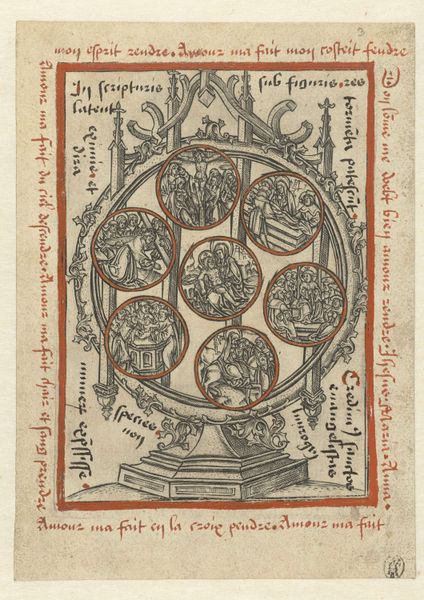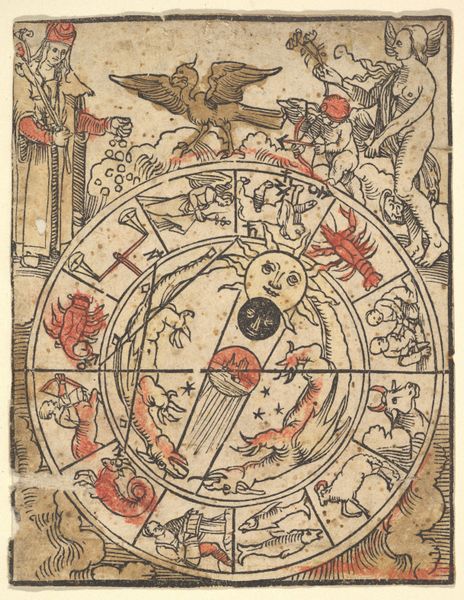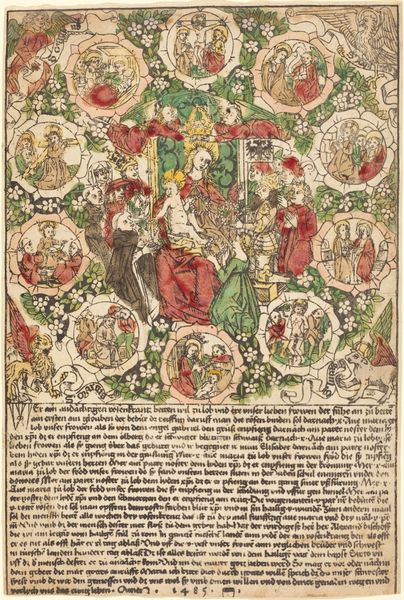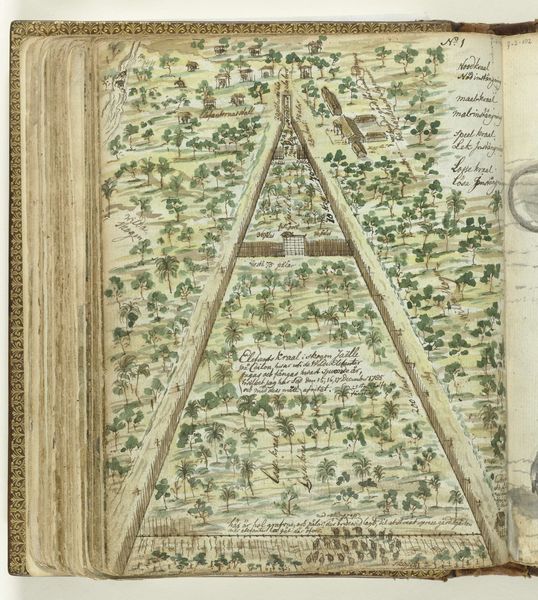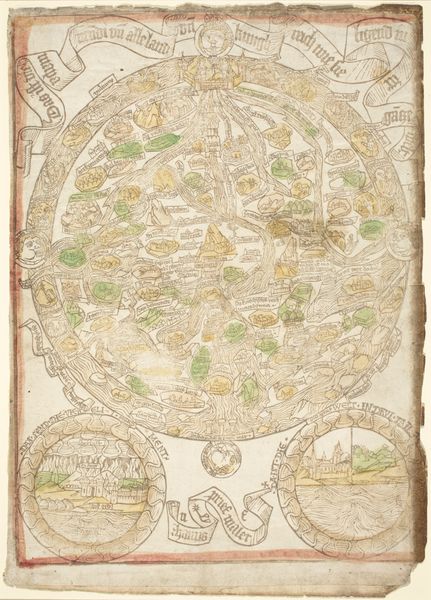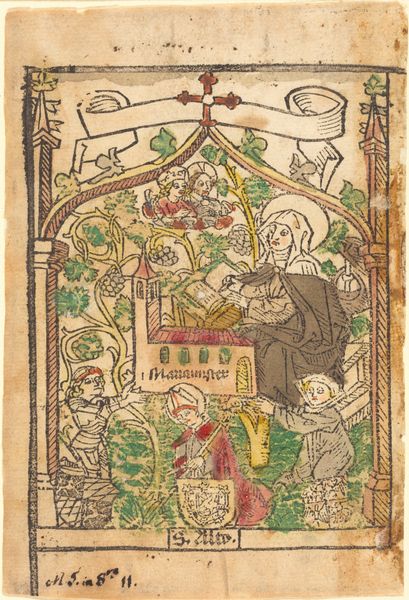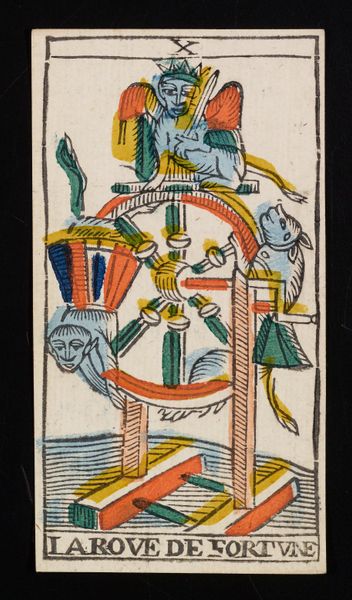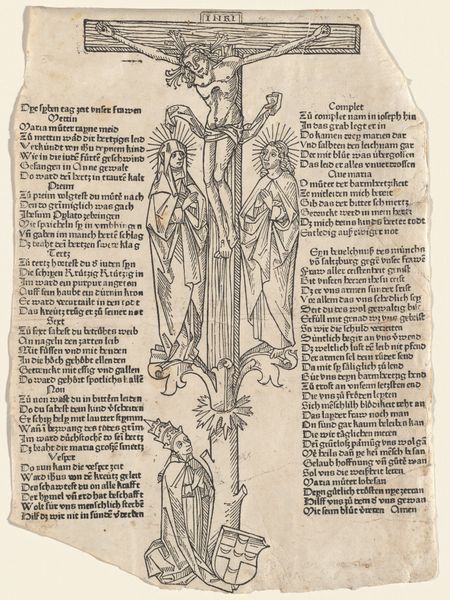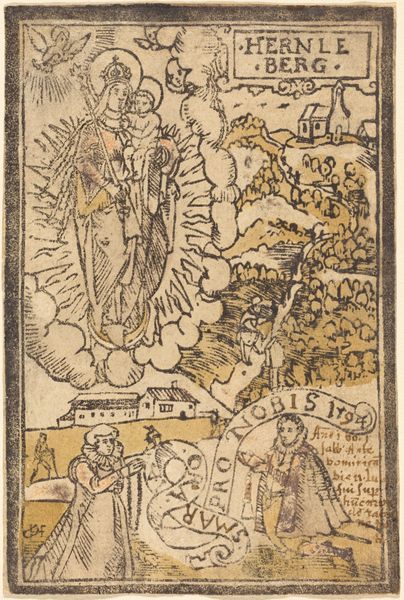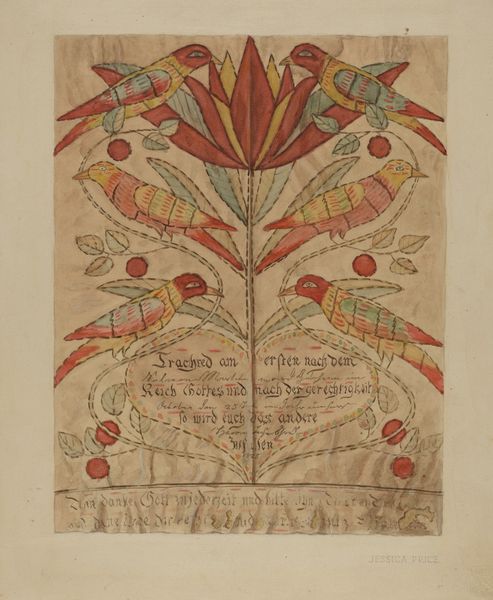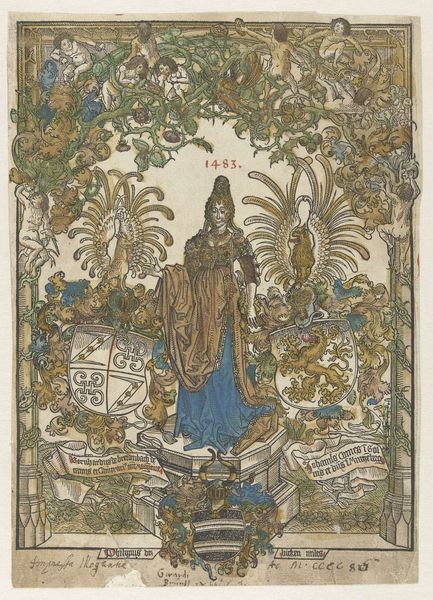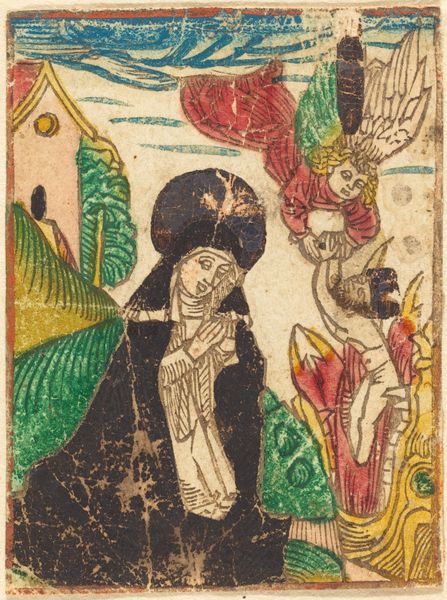
print, watercolor, woodcut
#
allegory
#
narrative-art
# print
#
figuration
#
form
#
watercolor
#
woodcut
#
line
#
northern-renaissance
#
watercolor
Dimensions: image: 26.2 x 18 cm (10 5/16 x 7 1/16 in.) sheet: 26.9 x 18.8 cm (10 9/16 x 7 3/8 in.) overall (external frame dimensions): 59.7 x 44.5 cm (23 1/2 x 17 1/2 in.)
Copyright: National Gallery of Art: CC0 1.0
Curator: Let's turn our attention to "The Way of Salvation," a woodcut with watercolor from around 1490, created by an anonymous Northern Renaissance artist. It’s quite striking. What are your first thoughts? Editor: My immediate impression is how vivid the colors are, especially the red accents drawing your eye upwards, along this almost ladder-like mountain path. The entire composition seems very deliberate, a climb from earthly darkness toward celestial light. Curator: Absolutely. Thinking about this as a woodcut, the labor involved is considerable. The artist would have painstakingly carved away the wood to leave the design raised. It demonstrates a real investment in both materials and the devotional practice behind creating such imagery. The application of watercolor on top adds another layer, softening the starkness inherent to the woodcut process, which seems very careful, quite considered for a print. Editor: Precisely. I'm particularly drawn to the symbolism of the ladder itself. Each rung is labeled with virtues: “Humility," “Patience," and "Obedience," among others. These labels aren’t simply words, but signifiers pointing towards an accepted path to grace that this woodcut lays out visually. Note how each step up, seems more illuminated. Curator: Good point! Given its origins in the late 15th century, its likely this would be reproduced many times over – think about the physical effort behind that! It's worth thinking how this imagery functioned as a tool for disseminating moral instruction among a wider populace through mass-produced art objects. The work challenges high-art distinctions with printmaking, enabling widespread access through labor. Editor: And in that access, visual cues played a vital role. See the thorns intertwined around the mountain: symbols of earthly suffering, framing and reminding the viewer of earthly strife even when trying to ascend to divine perfection? Even more interesting is the throng of winged holy figures awaiting the truly devout at the summit! They look like they await you personally! Curator: What a fruitful insight. Reflecting on the materials and the sheer number of these possibly distributed, this print speaks volumes about the democratization of imagery during this era and the tangible impact on material output. Editor: I concur; its symbology offers endless avenues into how our visual vocabularies echo and adapt through time, while simultaneously inviting closer inspection, no matter the era.
Comments
No comments
Be the first to comment and join the conversation on the ultimate creative platform.
